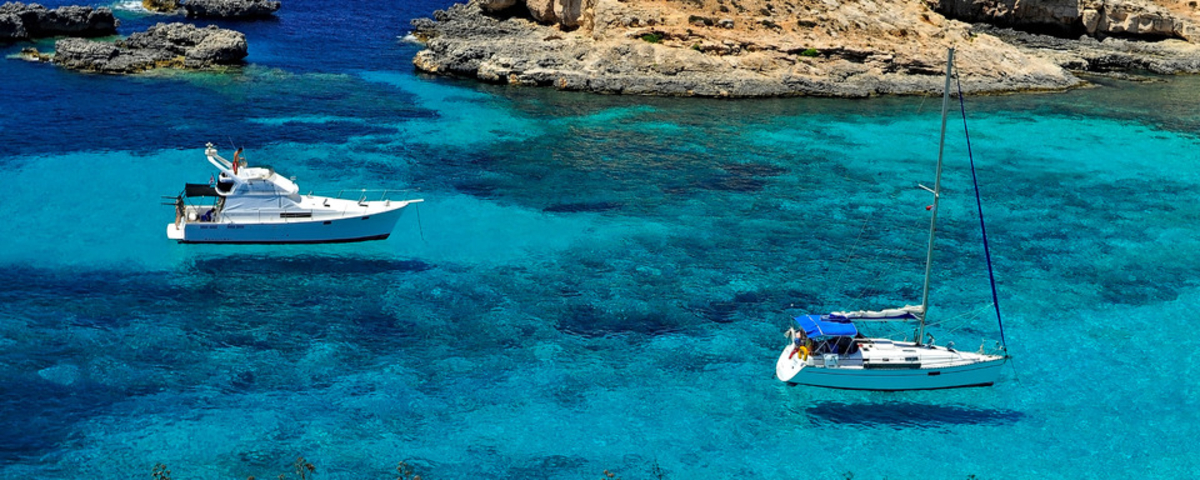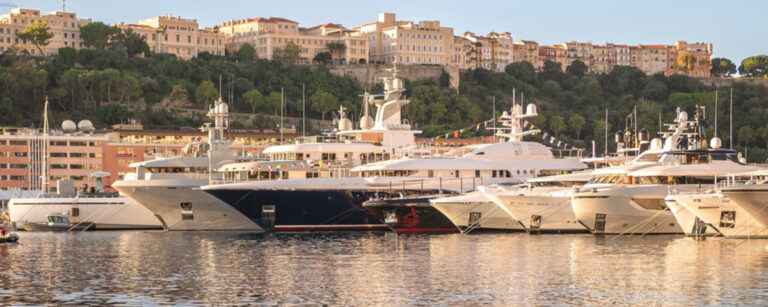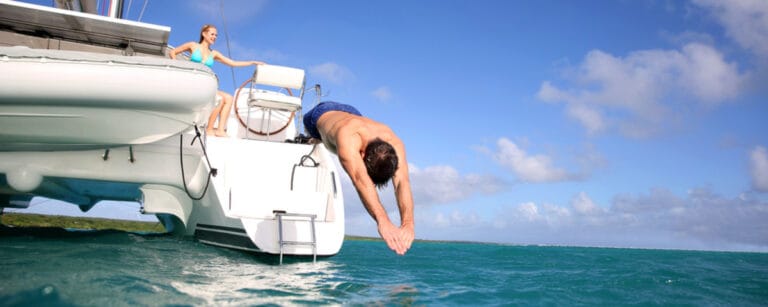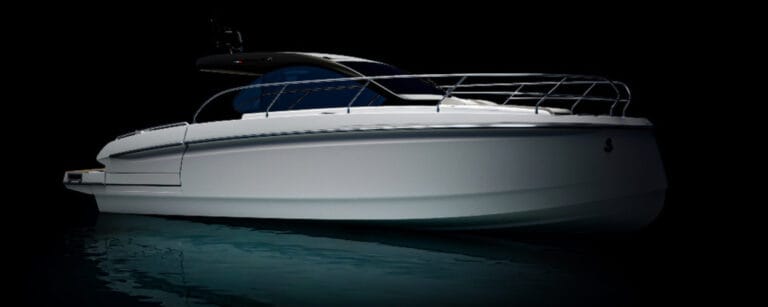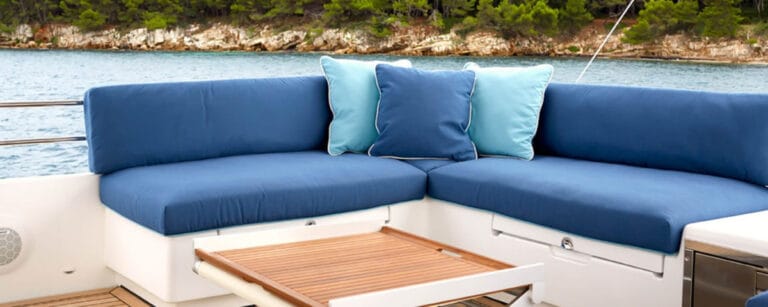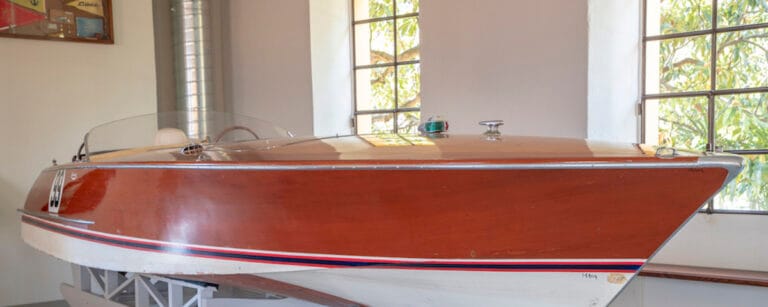Protecting yourself from the sun on board: bimini, sun awning, shade sail… what options are there for staying in the shade?
Essential Shade Solutions for Boating
Staying protected from the sun is crucial for comfortable and safe boating, especially during the summer months. Here’s a look at several shade solutions, each offering unique benefits.
The Bimini: A Must-Have for Sheltered Navigation
The bimini is a popular choice, consisting of a fabric canopy stretched over a foldable frame (typically stainless steel or anodized aluminum). It provides constant sun protection over the cockpit. Biminis come in various sizes, heights, and shapes, with options for observation windows to monitor the sail.
Why choose a bimini? It allows you to stay protected while still enjoying natural ventilation. It’s often combined with a sprayhood, creating a pleasant, semi-enclosed space.
Reputable technical fabrics like Sunbrella are known for their elegance, durability, and high performance, offering excellent resistance to UV rays, salt, and weather. Brands like Sattler Elements, Sunbrella Plus, and Stamoid Top provide excellent resistance to salt, UV rays, and mold. Custom solutions with foldable frames, adjustable tensioners, and quick-release fasteners are available from specialized workshops.
Good to know: A bimini can also support flexible solar panels, making it a discreet energy source for self-sufficient sailboats.
The Sun Awning: A Portable Shade for Stopovers
Ideal for creating shade at anchor or in port, the sun awning is a lightweight fabric stretched over the cockpit or foredeck. Unlike the bimini, it doesn’t rely on a fixed structure. It’s supported by removable poles, halyards, or shrouds, making it a flexible but less wind-resistant solution.
Advantages: Easy to store, lightweight, and budget-friendly. It can shade a large area for meals or relaxation in minutes.
Manufacturers like Lalizas, Osculati, Plastimo, and Nuova Rade offer universal or adaptable models with reinforced eyelets, elasticated shrouds, and carrying bags. Self-supporting models on telescopic frames are also available.
Beware of the wind: Even when properly tensioned, a sun awning won’t withstand strong gusts. It’s advisable to take it down when the wind exceeds 12 knots.
The Shade Screen: Flexible, Practical, and Effective
Positioned between the bimini and the sun awning in terms of usage, the shade screen is a stretched shade fabric, often micro-perforated, that allows air to pass through while filtering light. It attaches with snap hooks, suction cups, straps, or Velcro to the lifelines, bimini, or stanchions.
Benefits: It installs quickly, packs into a compact bag, and can cover the entire length of the cockpit or even create an awning on the foredeck. Perfect at anchor or during long summer stopovers.
Recommended materials: Opt for micro-aerated fabrics like Soltis 86 or Serge Ferrari Stamoid Light to avoid the greenhouse effect. They are washable, UV-resistant, wind-resistant, and tear-resistant.
In practice: The shade screen can shade a larger area than the bimini without hindering maneuvers, especially on catamarans or larger vessels. It can also serve as a privacy screen or side screen to protect from the setting sun.
Ready-made solutions are available with suction cup or clip attachment systems for boats without lifelines.
The Shade Sail: Design and Custom Protection
Less common but increasingly popular, the shade sail offers a more elegant and architectural approach. It’s stretched between anchor points (mast, railing, halyards, stanchions), forming a triangular or trapezoidal canvas.
An aesthetic choice: In addition to good sun protection (blocking up to 90% of UV rays), it adds a design touch to the boat without a rigid structure. You can play with shape, color, and orientation.
Technically: These sails are made from high-performance woven fabrics. Tension is key: a poorly tensioned sail will flap and wear out quickly.
Kits of ready-to-mount sails with stainless steel hooks and edge reinforcements are available. Sailmakers can also create custom pieces on request.
High-End Custom Solutions: For Large Vessels or Demanding Boaters
On board catamarans, motor yachts, or long-distance sailboats, shade becomes a structured living space. This includes rigid biminis (hard tops), motorized folding systems, and even roller blinds.
Maximum comfort on board: Removable side blinds, sliding fabrics, carbon or stainless steel structures, integrated LED lighting, built-in solar panels… anything is possible, as long as the budget allows.
Specialized boatyards and independent upholsterers offer 100% customized systems.
An asset for resale: A good integrated shade solution significantly enhances the value of the boat, especially in the Mediterranean.
Choosing Your Fabric: 5 Essential Criteria
- UV Protection: Check the UPF rating (ideally 50+) to filter out harmful rays as much as possible.
- Weight: For shade screens and stretched sails, opt for fabrics between 300 and 500 g/m2 for a good balance between strength and handling.
- Color: Light tones (sand, pearl gray) reflect heat but get dirty faster. Dark colors heat up more but retain their appearance better over time.
- Maintenance: Rinse regularly with fresh water, dry before storage, and avoid damp folding to prevent mold.
- Fasteners: Stainless steel eyelets, adjustable straps, marine composite snap hooks… the strength of the anchor points is crucial for longevity.
The choice of sun protection on board depends on many factors: the type of boat, the navigation program, the duration of stopovers, and exposure to the wind. Between the robust bimini, the flexible shade screen, the versatile awning, and the designer sail, there is bound to be a solution to suit your needs.
In an era where heat waves are becoming more frequent and we spend more and more time on board, managing shade well has become a reflex. Not only for comfort, but also to preserve your health… and that of the crew.
Enjoyed this post by Thibault Helle? Subscribe for more insights and updates straight from the source.

